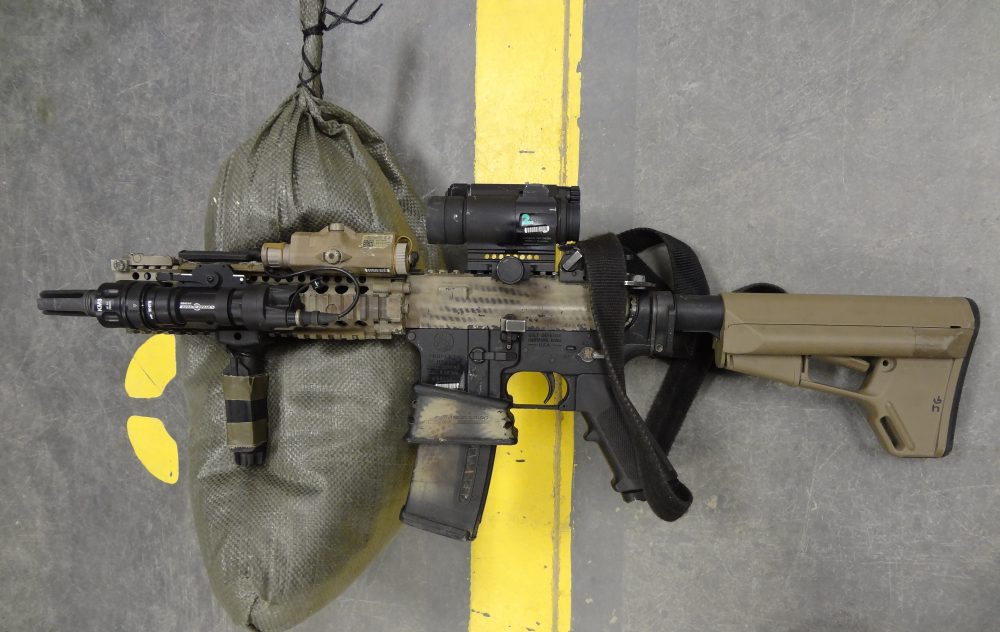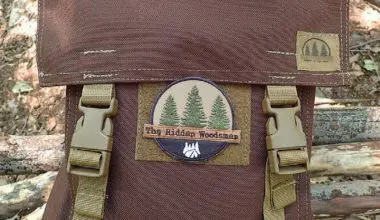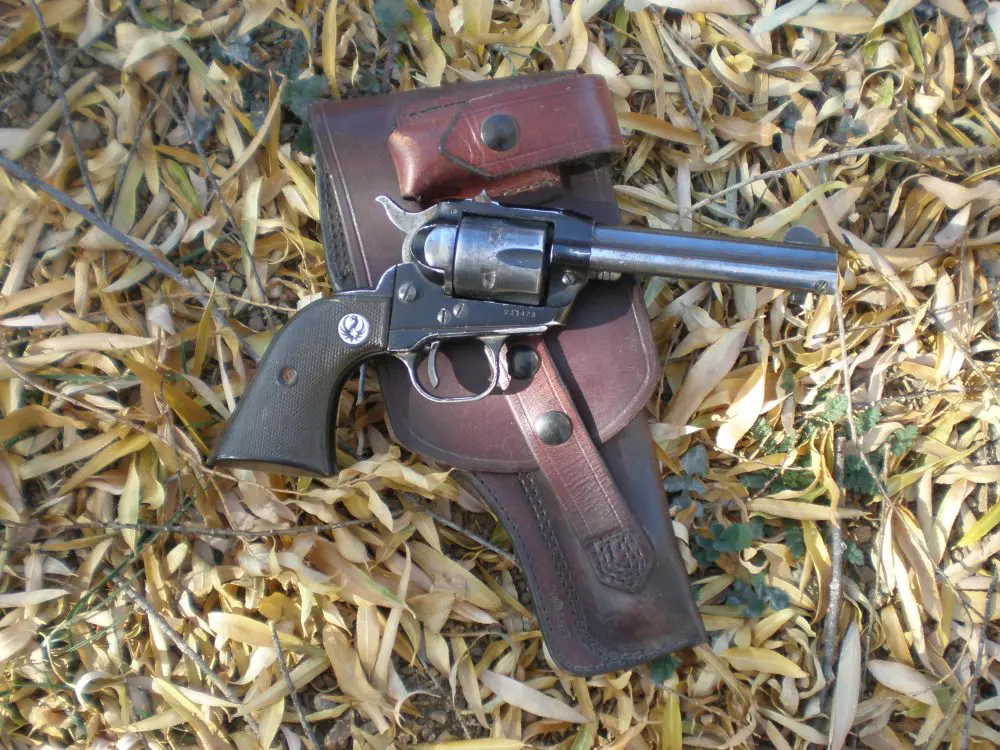About two years ago, I was assisting a manufacturer in some R&D on a new rifle. During the process, we broke various components, even melting some.
In an effort to push the rifle into a whole new level of reliability, we chose to go with Nickel Boron (NiB) parts for all the fire control and BCG components. In doing so, we erased the one uncontrollable problem with direct impingement rifles—carbon fouling. By going with NiB, you truly are thumbing your nose at conventional rifle building and maintenance and entering a world of previously unknown levels of reliability.
Table of Contents
WMD GUNS NiB-X TECHNOLOGY
When someone says they’ve found the magic fix to your problem, you’re willing to listen. But when you’ve been down that road already, with mixed results, you become a bit jaded. Remember how chrome parts were supposed to be the be-all, end-all of firearms technology? It was only about four or five years ago that chrome was all the rage.
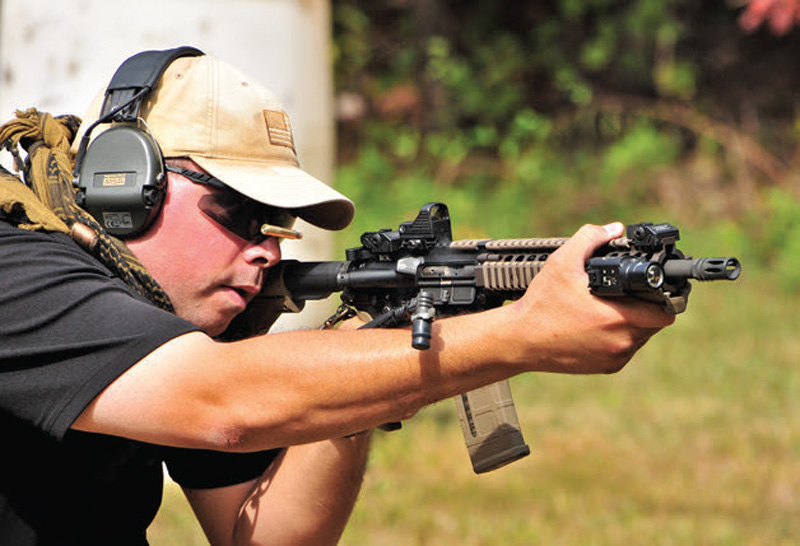
While chrome was and is much better than Manganese Phosphate (Parkerizing), I have had chrome bolt carrier groups (BCG) start chipping after as few as 2,000 rounds of semi-auto fire. So when NiB came to my attention, I tried it and so far have no complaints.
If you’re looking for weapon coatings of the drop-in kind, look no further than WMD Guns. They are employing NiB technology on complete upper and lower parts kits that are milspec and drop-in ready. The actual coating process is proprietary and, suffice it to say, it works.
WMD Guns also does MeloniteNitrometTM, a salt bath nitrocarburizing process (aka MeloniteTM, TenniferTM, etc), Nickel Teflon, Zinc Nickel, and Electroless Nickel work.
CHOOSE YOUR WEAPON
NiB-X is the real deal, folks. Even when completely bereft of lube, it’s still very slick. When I started looking at NiBX, the one thing I kept reading was that it was so hard and lubricious it needed no lubrication of any kind to stay in the fight.
OK, show me.
To test something like NiB-X, you have to get really dirty. I looked at the weapons I had and knew that I needed to get my hands on something that was truly milspec so I could rule out any weapon-induced malfunctions. If I had a malfunction, I wanted it to be in either the ammo or the internal components, not in the actual structure of the weapon itself.
I reached out to Bravo Company Manufacturing because I knew from their reputation that whatever I received would be built correctly and wouldn’t be the weak link. I discussed my article idea with BCM’s owner Paul Buffoni and asked if he could loan me a weapon for T&E.
I made no bones about the fact that the article was not going to be focused on BCM but would be mostly about NiB technology. I also informed Paul that he needed to send me only a completed upper minus BCG, charging handle, and sights. It’s rare for a manufacturer to allow you carte blanche to ask for selected items with full knowledge that the end user is going to torture test those items.
Furthermore, it’s even more unusual to find a manufacturer that won’t ask for creative control over what you add, detract or even do with their product in relation to a printed article. That shows trust in their end product—and that is BCM.
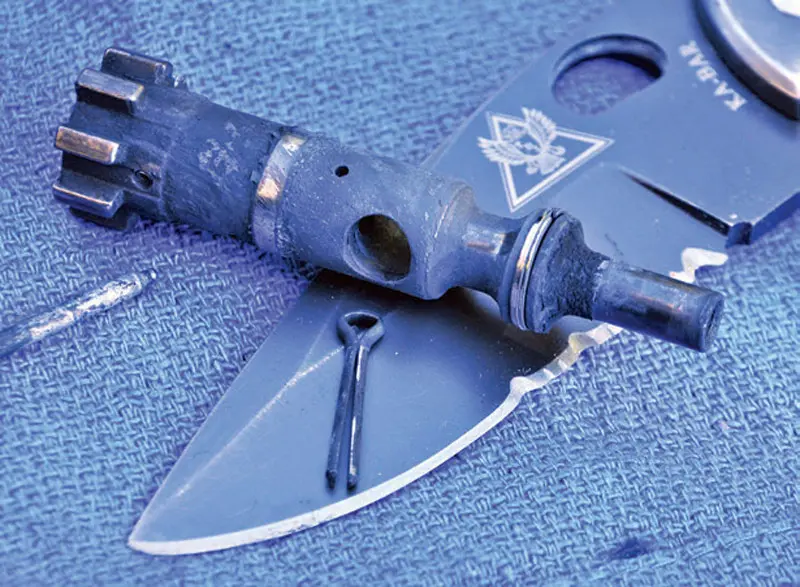
Paul graciously sent me a BFH (Barrel, Forged, Hammer) 11.5-inch cold hammer forged barreled upper with Daniel Defense RIS II rail. I took the upper and added an MRDS optic co-witnessed with Troy Industries micro battle sights. I finished kitting it out with a SureFire X300 tac light mounted at three o’clock on the RIS II rail and a Magpul Angled Foregrip. The last piece to go in was a clean, lube free, NiB-X BCG from WMD Guns.
I mated the upper to one of my SBR’d BCM lowers I had rebuilt with NiB-X parts. I added an NiB-X coated BADASS (Battle Arms Development Ambidextrous Safety Selector) to the lower to keep things as smooth as possible. My intentions were to run the gun without lube and I didn’t want the safety selector to bind up when it got overfouled with carbon.
I also added a KNS Precision pin kit to keep things properly aligned during the many rounds I was intending to fire through the gun.
TO LUBE OR NOT TO LUBE
There I was, getting ready to head out to my range for the first rounds through this rifle. The one thing I always do without fail is a quick lube check on my weapons before my weekly trigger time. I paused as I held the BCM gun in my hands—to lube or not to lube? It is such a habit of mine to keep my weapons well maintained that I had a fair amount of anxiety about running this rifle totally dry. Once you can let the value of the weapon go and just trust the engineering, you can really get into testing things as they should be.
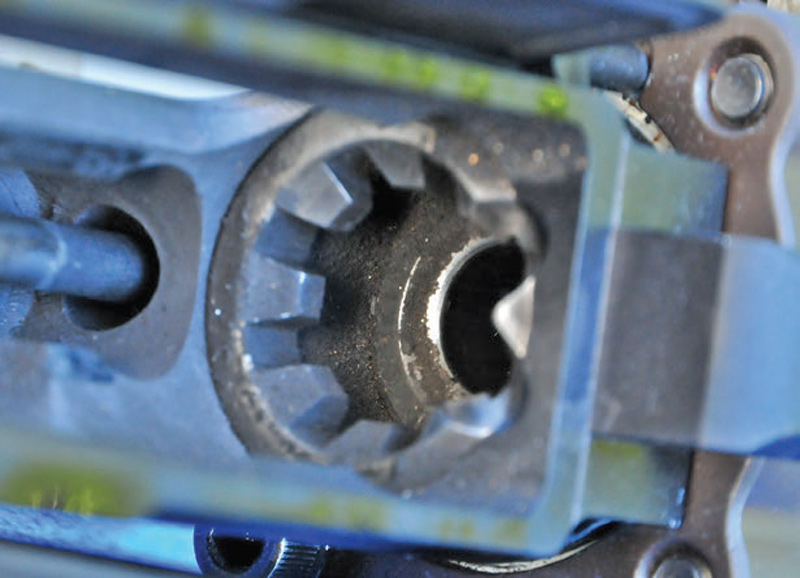
That afternoon I fired my first 150 rounds of lube-free training through the gun without a single malfunction. I could now say that the weapon was going to run without malfunctions—at least on a limited basis. Of course it helps when you shoot quality ammo like Black Hills through your gun.
Most writers have limited time and ammo to spend on any given weapon. T&E articles are often like writing process papers in college. You’re given a subject to cover, then you give your reader a sense of what it’s like to work with the item.
That works fine most of the time, but when you’re writing an article on torture testing a gun, you should at least put more than a couple hundred rounds through that gun. For this I asked for assistance from Black Hills Ammunition, which generously provided me with a couple cases of their remanufactured .223 55-grain FMJ ammo.
I then asked Tactical Defense Institute (TDI) if I could come out for their Tactical Rifle II course so I could truly test this rifle while training with it. TDI owner John Benner graciously invited me out and allowed me to slide into the sold-out class at the last minute. Let the testing begin!
CLASS IS IN SESSION
It’s not a real test to just blow mag after mag through a rifle. I wanted to run courses of fire with it and get it hot, let it cool down, and then do it again. When a rifle is made to run from cold to hot over and over and without lube, it really pushes the components.
By the time I got to TDI in West Union, Ohio, I had about 450 rounds through the NiB-X equipped BCM gun. I started the class off with a truly filthy gun that grouped just fine at 100 yards from prone. The only maintenance I’d been doing to the weapon was passing a BoreSnake through the barrel every couple hundred rounds. But I stopped doing even that during the class.
As the course progressed, I kept running PMAG after PMAG through the rifle. By mid-day I had gotten the weapon hot enough on a couple of drills to have to lay it on the ground. During lunch break, I restrained myself from cleaning the rifle and just left it in the truck while I ate. I rather enjoyed my new-found freedom. Instead of spending lunch wolfing down my food then stripping and cleaning my weapon, I spent it eating at a leisurely pace.
We returned to the firing line after lunch and, right out of the gate, I experienced the one and only failure to fire that I have had in this rifle to date. We were doing movement drills with our support side and firing on the move. I don’t know if it was poor shouldering of the weapon due to using my support side or fouling having an hour to set and solidify in the gun, but I got a click instead of a bang.
I quickly did a very crunchy tap-rack-bang and the weapon fired the rest of the rounds in the mag with a gray cloud of carbon blowing out of it. I picked up the one round that hadn’t fired, inspected it, fed it into the top of the next PMAG, and fired it through the rifle.
In retrospect I wish that I had kept that one round and sent it back to Black Hills. The round was in perfectly serviceable condition, but seemed to have a less-than-solid primer strike marking on it, which was an obvious indicator that carbon or maybe dirt had found its way into the weapon. I will not sugar coat this one failure, though it is inconsequential to have one malfunction out of (at that point) almost 1,000 rounds through a gun.
The point here is that by the time I had this failure, the gun was very “crunchy.” There really is no other way to describe a dry and dirty rifle other than “crunchy.” It was routinely sloughing off chunks of flaky carbon upon working the BCM Gunfighter charging handle back and forth. This was a unique experience, considering that carbon is usually experienced as a wet, sludge-type compound due to it mixing with Slip 2000 EWL.
My BCG was coated with carbon and the firing pin was dragging badly from the total lack of lube. Remember, I was shooting a BCM rifle with an 11.5-inch barrel. Anyone who’s ever worked with SBRs knows that they foul at a much faster rate than their 16-inch barreled counterparts.
As soon as I had the one malfunction, I thought, “Aha, I have finally found a way to kill an NiB-X gun.” Wrong! Not only did the gun “soldier on,” but I finished the day without any further malfunctions.
TRAINING DAY 2
For TD2, I swapped my semi-auto lower for a machine-gun lower and really started turning on the heat on the BCM/ NiB-X combo. After each drill, the gun got so excruciatingly hot that I was cutting it loose and laying it on the gravel, bolt open, while loading my completely exhausted supply of mags. I was putting 45 to 60 rounds through the gun during each drill without incident. When the instructors would say, put at least five shots into the torso and two into the head of each target, I would give each roughly 12 and eight with two quick bursts of fire.
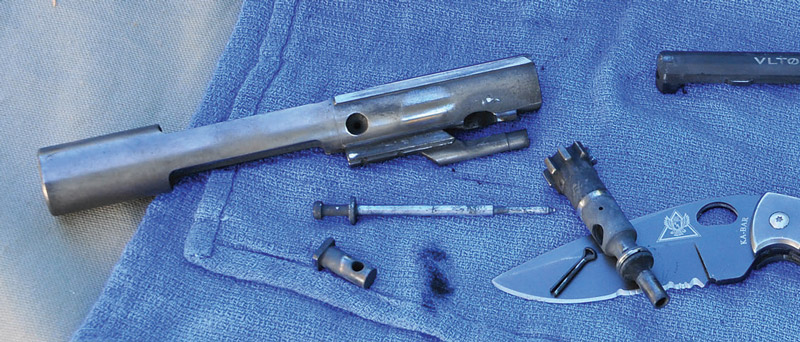
By the end of the two-day course, I had poured almost 1,600 rounds through the gun with only the one failure. The weapon was still able to group tightly, as evidenced by the fact that one of the last things I did at the class was shoot multiple hostage-taker targets from 200 yards without any hostages receiving even a scratch.
The combo of Black Hills’ ammo, BCM’s properly built rifle, and the NiB-X components proved to be unstoppable. I was more than impressed with the entire experience and since then have put more rounds through the gun, which is now nicely broken in.
CLEANING
I knew that I’d eventually have to do the dreaded task. Because that part of the test is an actual appraisal of the rifle in regard to cleaning time, I took it slowly and made sure to bring my camera out onto the deck for the cleaning session.
Normally I do an extended pre-soak to soften the sludge before going at it with my brushes. But this time, I just took the BCM rifle apart and found something very surprising: there was a lot of dry film, easily removable fouling. That’s right, the conspicuous absence of lube prevented the fouling from sticking like it normally does. I was able to take a dry cleaning brush and remove the vast majority of the crud inside the upper receiver and from the barrel’s rifling. I then used my folding knife to scrape the carbon off the bolt. It was as simple as scraping and turning along the entire radius of the bolt.
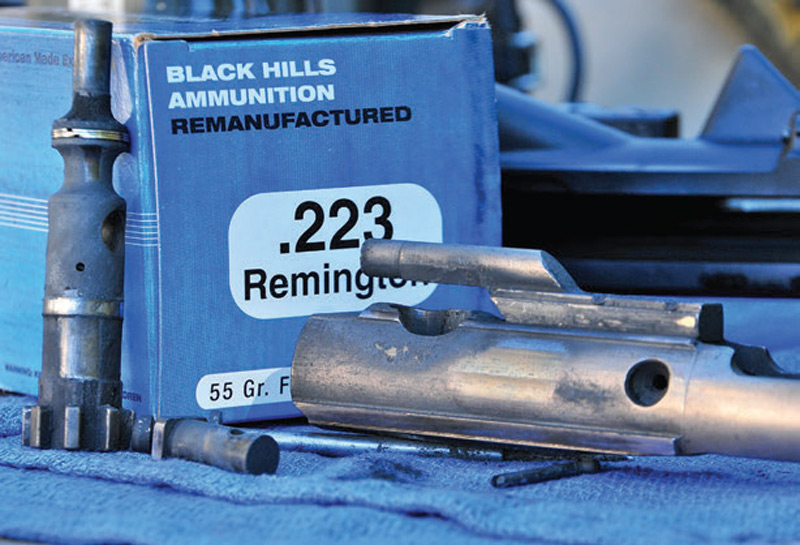
I then used my bolt scraper and cleaned out the inside of the carrier with five quick turns and reassembled the BCG. I wiped the fouling out of the receiver extension and wiped down the spring and buffer with an oily rag. I reassembled the weapon and the crunch was gone. The weapon once again had that solid metallic snap that a BCM rifle makes when you slam the BCG home on an empty chamber. Done!
CLOSING
If you’ve read some of the test data on the NiB rifle tests, you know that those tests were done with blanks. While it is obvious that firing corrosive blanks through a rifle actually made it that much harder on the NiB components, it was still a test done with blanks.
My experience and testing are certainly not meant to be taken as scientific, in fact I would call them more anecdotal than anything else. My experience was meant to be as realworld as I could get it.
I simulated what could be construed as rolling firefights over a couple of days. The gun started off new from the box with no lube. It was baptized by fire and stayed in the fight. I repeatedly pushed this gun to the point where it was too hot to touch. It got so hot on multiple occasions that I feared my rail panels might melt. The heat mirage coming off the front of the gun during high-round-count drills blurred my vision through my MRDS optic. That’s hot!
I can now say that I trust my life to this BCM/NiB-X rifle. Of the few things I have found worthy of my time and money, NiB-X coated parts from WMD Guns are certainly at the top of the list. Do yourself a favor and try NiB-X parts. While undoubtedly pricey, they really are worth the extra money.
Many thanks to Black Hills for providing the ammunition that allows me to do tests like this for S.W.A.T. readers. Thanks also to Bravo Company Mfg for the use/abuse of their 11.5-inch BFH rifle. Lastly thanks to WMD Guns for bringing EXO NiB-X technology to the forefront and making it possible to turn an out-of-thebox rifle into a torture-defying weapon that will always be duty and home defense ready.
In closing, even though I ran this gun totally lube and corrosion free for a lot of rounds, I condone using lube. Going without lube as the norm instead of the exception is not wise. I pushed the weapon to prove the point, but rest assured I now have this same weapon back in service with a modest film of Slip 2000 EWL on all critical parts. Anything else is inviting disaster.

